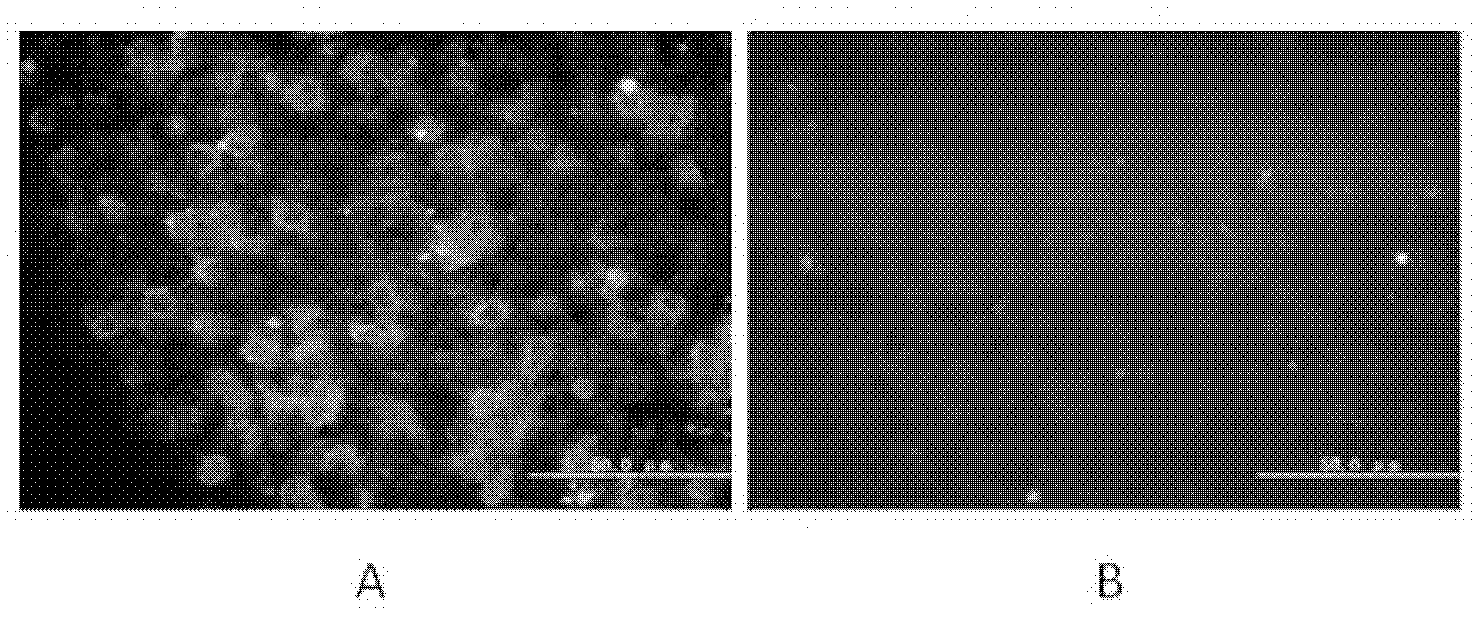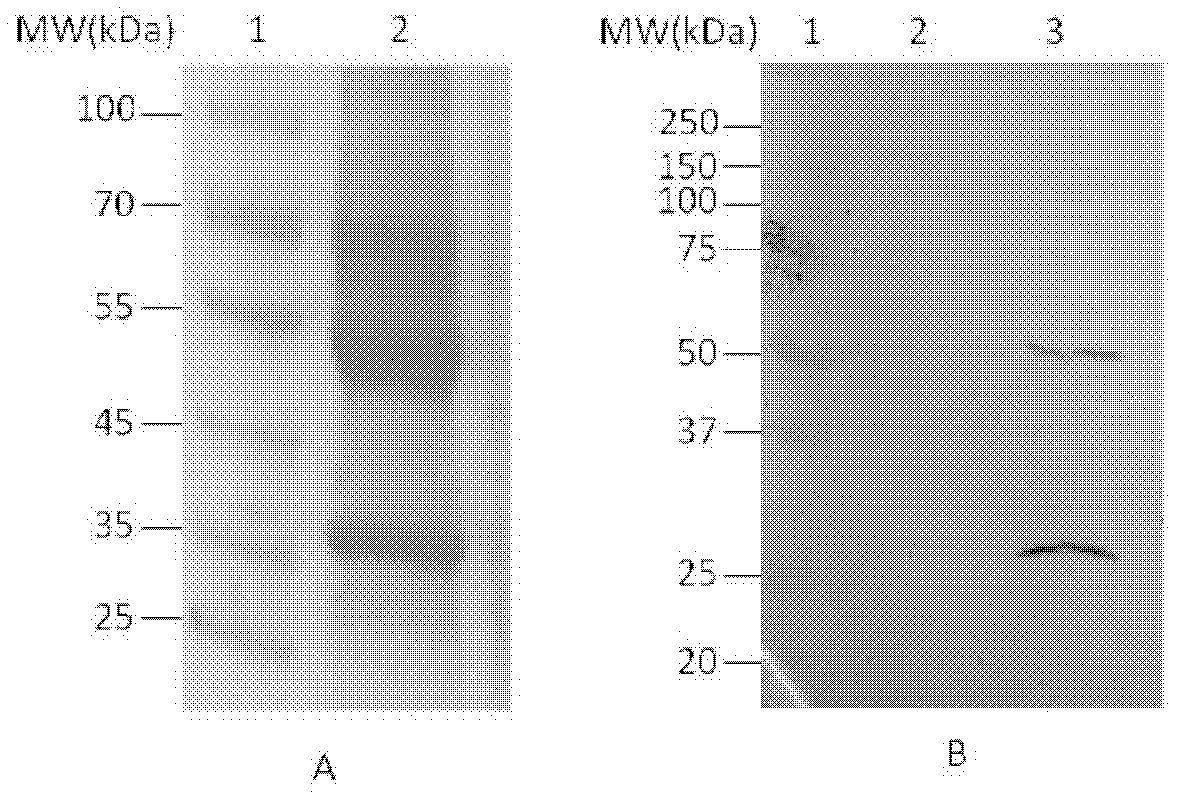Preparation method of virus-like particles (VLPs) of Chikungunya virus (CHIKV) and its application
A chikungunya virus, virus-like technology, applied in the fields of molecular biology and virology, can solve the problems of lack of protein post-modification function and inability to glycosylate expression products.
- Summary
- Abstract
- Description
- Claims
- Application Information
AI Technical Summary
Problems solved by technology
Method used
Image
Examples
Embodiment 1
[0043] Embodiment 1 The transformation of CHIKVC-E3-E2-6K-E1 gene element
[0044] 1. Cultivation of CHIKV and extraction of total RNA from cells
[0045]Inoculate the virus seed solution of the CHIKV SD08Pan strain (according to the method disclosed by Kui Zheng et al., Genetic analysis of chikungunya viruses imported to mainland China in 2008, Virology Journal 2010, 7:8) to adherent and overgrown Vero cells. When the lesions reached +++~++++, the total cellular RNA was extracted by Trizol reagent. LS reagent is a product of Invitrogen, USA.
[0046] 2. Transformation of CHIKV C-E3-E2-6K-E1 gene element
[0047] Using Thermo Script TM RT-PCR System (Invitrogen, USA) reverse-transcribed the RNA of CHIKV to synthesize the first strand of cDNA. The gene was modified by PCR method, and restriction enzyme cutting sites, BamHI (GGATCC) and NotI (GCGGCCGC) were introduced.
[0048] The primers used in PCR are as follows: (please provide the sequence)
[0049] pAcgpCHIKC-BamH...
Embodiment 2
[0056] Example 2 Construction and identification of recombinant vectors capable of secreting and expressing CHIKV VLPs
[0057] One, the construction of the recombinant vector of CHIKV VLPs
[0058] The fragment amplified by PCR in Example 1 was digested by BamHI and NotI to recover the target fragment, and then directional ligated with the pAcGP67B vector that had been digested by the same double enzymes, and the ligation product was transformed into E.coli DH5α (product of Stratagene, USA) Competent For the cells, a single clone was picked and inoculated in LB medium containing antibiotics, and cultured with shaking at 37°C for 12 hours. The plasmids selected and identified correctly were named as pAcGP67B-CHIKV C-E1 ( figure 1 ).
[0059] 2. Co-transfection of SF9 insect cells with recombinant vector and baculovirus linear DNA
[0060] Two hours before transfection, SF9 cells (ATCC, CRL-1711, purchased from the American Type Culture Collection) were transferred to 6-well...
Embodiment 3
[0064] Example 3 Preparation, Identification and Immunogenicity Experiment of CHIKV VLPs
[0065] 1. Preparation and identification of CHIKV VLPs
[0066] The SF9 cell density of the third generation recombinant baculovirus seed infection of harvesting 2L suspension culture is about 10 8 / mL, three days after infection, observe the cell lesions every 12 hours, when 20-30% of the cells have lesions, harvest the cell culture supernatant, high-power concentration to about 100mL, and use 15% sucrose cushion for 30,000g ultracentrifugation for 4h to precipitate VLPs . The pellet was resuspended in 3 mL of PBS solution containing 300 mM NaCl, the VLPs were purified by 20%-60% sucrose density gradient centrifugation, and the bands of each layer were extracted for SDS-PAGE and Western blot detection.
[0067] Take 40 μl of the isolate and add 10 μl of 5× protein loading buffer, heat at 95°C for 10 minutes, and perform SDS-PAGE electrophoresis. One of the gels is stained with Coomass...
PUM
| Property | Measurement | Unit |
|---|---|---|
| diameter | aaaaa | aaaaa |
Abstract
Description
Claims
Application Information
 Login to View More
Login to View More - R&D
- Intellectual Property
- Life Sciences
- Materials
- Tech Scout
- Unparalleled Data Quality
- Higher Quality Content
- 60% Fewer Hallucinations
Browse by: Latest US Patents, China's latest patents, Technical Efficacy Thesaurus, Application Domain, Technology Topic, Popular Technical Reports.
© 2025 PatSnap. All rights reserved.Legal|Privacy policy|Modern Slavery Act Transparency Statement|Sitemap|About US| Contact US: help@patsnap.com



